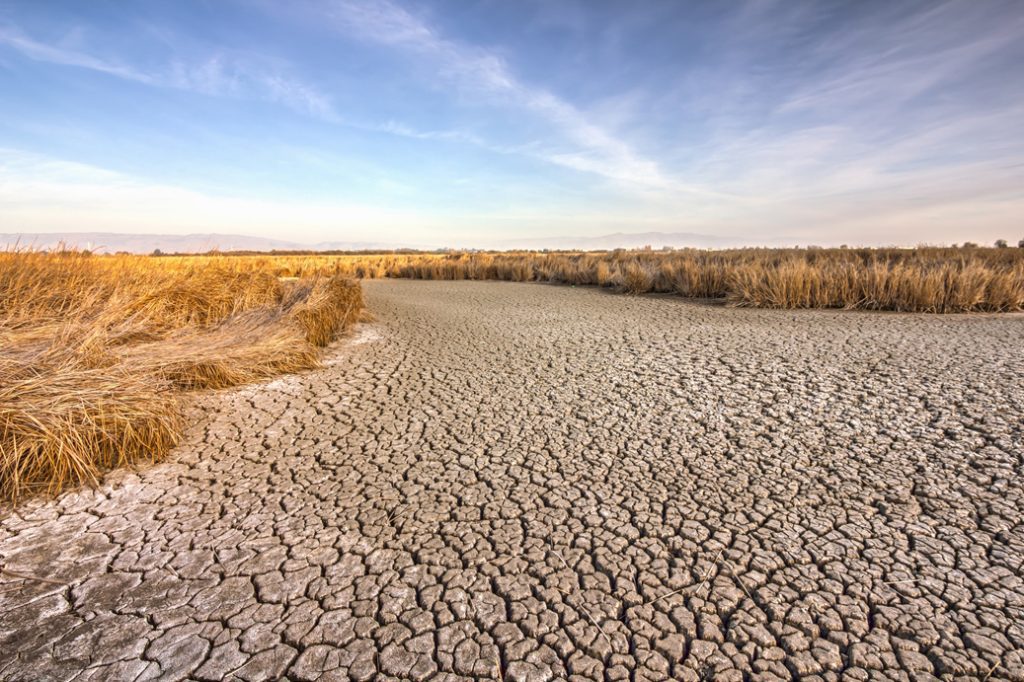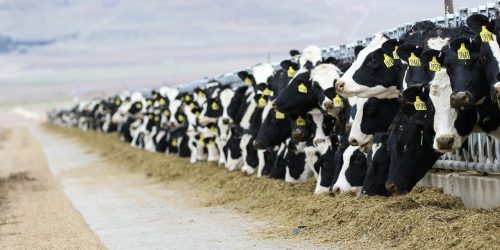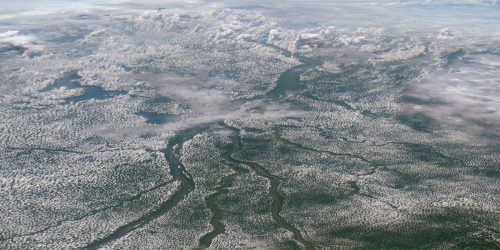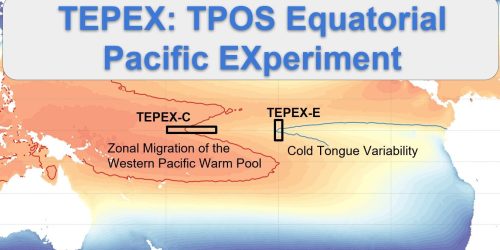NOAA’s National Integrated Drought Information System (NIDIS) Program is announcing five new 2-year projects in Fiscal Year 2020 (FY20), through a multi-program collaboration, that aim to improve our understanding and use of drought indicators, thresholds and triggers, and drought impact reporting to inform decision-making to prepare for and respond to drought. The competitively selected projects total $2,776,805, including $2,541,397 in grants and $200,000 in other awards.

The National Integrated Drought Information System (NIDIS), authorized in 2006, is a multi-agency partnership that coordinates drought monitoring, forecasting, planning, and information at national, state, and local levels across the country. NIDIS aims to help the nation move to an increasingly proactive approach to understand and manage drought risks and impacts, and to improve long-term drought resilience. Since its inception and through two subsequent reauthorizations (2014, 2018), NIDIS has been working with various federal, state, local and tribal agencies as well as a network of researchers, academics, resource managers, and policymakers. The work is the basis for the regional Drought Early Warning Systems (DEWS). These systems are not in place simply to disseminate forecasts, but also to encourage innovation by integrating new, locally relevant drought information and supporting the introduction of new technologies that detect and communicate drought risks and warnings. Visit www.drought.gov, the U.S. Drought Portal, to learn more about NIDIS.
For the FY20 Coping with Drought competition, NIDIS encouraged applicants to focus on industry and economic sectors beyond agriculture (e.g. tourism and recreation, navigation, water utilities, manufacturing, ecosystem services, and public health). In particular, NIDIS was interested in several areas of study: applied research that explored innovation in the arena of impact reporting and purposeful analysis that moves beyond cataloging impacts to inform decision-making; comparing historical physical indicators to impact data to determine if they were adequate to set thresholds and triggers in response and mitigation plans; examining whether impact data be used to measure increases in resilience over time based on actions taken to decrease vulnerability and mitigate drought impacts; determining if current impact data collected is adequate or robust enough to be used as an input into drought vulnerability assessments; and understanding how biophysical indicators could be better integrated into drought planning and mitigation.
The portfolio of projects selected includes lead institutions in Colorado, Washington, Idaho, California, and Nebraska. These are led by non-federal universities, nonprofits, non-governmental institutions, and small businesses. Projects include federal partners, too. Applied research will focus on emerging issues such as ecological drought, drought impacts to tourism and recreation, public health, water storage and conveyance systems, and the complex connections between drought indicators and impacts.
The 5 new projects funded by NIDIS in FY20 are:
- Visualizing ecological drought impacts, vulnerabilities, and drivers to inform decision-making
Droughts of the 21st century are characterized by hotter temperatures, greater spatial extent, and longer duration. Reductions in water available to natural systems are increasingly exacerbated by human water use. This situation leads to ecological impacts from drought that ripple through human communities which depend on those ecosystems for critical goods and services. Despite the high costs to both nature and people, current drought research, management, and policy perspectives often fail to evaluate how drought affects ecosystems and the “natural capital” they provide to human communities. Integrating ecological drought into decision-making is an essential step toward addressing the rising risk of drought in the 21st century. However, ecological drought is a relatively new concept, and it requires development before it can be truly integrated into decision-making efforts to prepare for and respond to drought. This project will provide a foundation of understanding ecological drought vulnerability to support participatory planning processes that integrate ecological drought. The team will produce integrated science products to improve our understanding of how drought indices, landscape context, ecological condition, and human water use relate to ecological thresholds. This will allow natural resource managers and drought planners to better anticipate ecological impacts and downstream effects on human communities.- PI: Shelley Crausbay, Conservation Science Partners, Inc.
- Co-PIs: Kimberly Hall, The Nature Conservancy; Molly Cross, Wildlife Conservation Society; Jason Dunham, USGS Forest and Rangeland Ecosystem Science Center; Colin Penn, USGS Colorado Water Science Center
- Improving drought indicators to support drought impact mitigation for natural resource management
Effective natural resource and land management requires the ability to mitigate the impacts of drought. However, we lack a clear understanding of the drought indicators and associated thresholds that are most informative to undertake specific actions (drought triggers) and to assess drought impacts in the Pacific Northwest region. This project will investigate the relationships between indicators, thresholds, triggers, and impacts within economic sectors that fall under the purview of natural resource management, including recreation. It will combine stakeholder-sourced impacts data with existing hydro-meteorological information and communicate the relationships that have the most explanatory value. The ultimate goal is to improve the ability of drought managers in these sectors to mitigate economic drought impacts through timely action based on relevant information. To this end, the project will: (1) collaborate with stakeholders to develop a database of drought impacts specific to natural resource management and recreation; (2) collaborate with stakeholders to identify the drought information (timescales, decision calendars, indicators, and thresholds) they would need to trigger drought impact mitigation efforts; (3) apply analytical approaches using a suite of existing hydro-meteorological and other datasets to objectively identify historical relationships between sector-specific drought indicators, thresholds, triggers, and impacts; and (4) communicate project findings to the stakeholder community through information sheets, a workshop, and an online decision support tool in the NIDIS-sponsored Climate Toolbox. The decision support tool will link drought indicators and thresholds with historic impacts and triggers for the natural resources and recreation sectors.- PIs: Bart Nijssen, University of Washington and John Abatzoglou (University of California-Merced
- Linking indicators of drought hazard to multi-sectoral impacts: an application to California
One of the challenges facing drought preparedness is how to refine linkages between drought indicators and drought impacts across multiple sectors and identify triggers and thresholds for drought response. This is particularly challenging in the western U nited States , where extensive water storage and conveyance systems help mitigate local drought conditions. In these settings, current indicators of drought hazard—which focus on local supply conditions—may have limited connection with actual water scarcity. This project seeks to develop a methodology for evaluating impacts in water and land use sectors in regions that have extensive water storage and conveyance systems. There are four linked scientific objectives: 1) incorporate the capability and condition of water storage and conveyance systems into drought hazard indicators; 2) develop sector-specific drought hazard indicators for urban, agricultural, and rural communities, along with indicators for freshwater ecosystems; 3) link drought hazard indicators with exposure and vulnerability metrics to profile drought impact risk in each sector in each region; and 4) use a collaborative process to develop readily updatable map-based decision support tools building on current NIDIS platforms.- PIs: Alvar Escriva-Bou, Ellen Hanak, and Jeffrey Mount, Public Policy Institute of California
- Evaluation of drought indicators for improved decision-making in public health and emergency preparedness: reducing drought’s burden on health
This project will take an interdisciplinary approach to improv ing public health understanding of drought early warning and planning to reduce negative health impacts on at-risk populations in the United States. Health departments and healthcare professionals need reliable information to effectively prepare and warn constituents of pending natural and biological threats. This information is critical to develop hazard messaging or other response actions in a timely fashion. Warning systems for drought are a high priority of federal and local agencies, but drought presents a complex issue, as public health officials are just starting to investigate the connections to human health. Public health guidance documents and other tools are available for officials to help address drought, but these materials lack effectiveness if the linkages between drought and health are not fully understood. To overcome this issue, a thorough assessment of the relationship between drought indicators and health outcomes is needed. The project team believes that health outcomes based on drought will vary for different regions of the United States because of changes in populations demographics, local environment, and overall drought exposure. Certain underlying health disparities (e.g. race/ethnicity, age groups, occupation, rural or urban status, and access to existing health care) will result in some areas of the United States being more vulnerable to drought. As the team evaluates various drought indices with health outcomes, they will also identify discrepancies in population outcomes. The project will analyze multiple drought indices to identify potential regional health outcomes. The findings will benefit public health professionals or emergency planners by showing utility for certain drought indicators in predicting health outcomes and enable the production of specialized messaging for at-risk populations.- PI: Jesse Bell, University of Nebraska Medical Center;
- Co-PIs: Jesse Berman, University of Minnesota ; Shubhayu Saha, Centers for Disease Control and Prevention; Azar Abadi, Rachel Lookado, and Yeongjin Gwon, University of Nebraska Medical Center; Ronnie Leeper and Jared Rennie, North Carolina State University
- Developing drought impact models for the intermountain West Drought Early Warning System
Drought Early Warning Systems (DEWS) are well-equipped with indicator data, which describe the physical severity and extent of drought conditions. However, few models exist to translate indicators into socioeconomic impacts, so DEWS have limited capacity to identify thresholds that trigger drought management responses. Improving our understanding of the relationship between indicators and impacts is critical to help ing decision-makers reduce the adverse consequences of drought. This project will develop empirical quantitative models that can better capture the relationships between drought indicators and impacts, predict drought impacts, and identify indicator thresholds. These models will help support policy and planning by identifying triggers for management action and improving drought management frameworks using machine learning techniques to map and quantify the complex connections between drought indicators and impacts.- PI: Adam Wlostowski, Lynker Technologies, LLC
- Co-PIs: Megan O’Grady, Keith Jennings, and Graeme Aggett, Lynker Technologies, LLC; Jesse Burkhardt, Colorado State University









